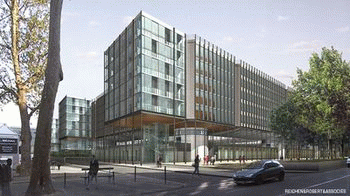GDR Neutrino meeting June 25-26 2019
25-26 juin 2019 LPNHE, Paris

Le Groupement de Recherche (GDR2918 CNRS) NEUTRINO fédère les équipes de recherche du CEA et du CNRS travaillant autour de la physique du neutrino que ce soit au niveau expérimental ou théorique.
Le laboratoire LPNHE (Université Pierre et Marie Curie) organise les prochaines réunions plénières du GDR Neutrino. Elles auront lieu le mardi 25 juin 2019 à partir de 14 h et le mercredi 26 juin 2019 de 9 h à 18h, dans l’amphithéâtre Charpak.
Une séance fermée du conseil de groupement aura lieu le lundi matin 25 juin à 10h30.
Pour participer à ces journées, vous êtes invités à vous enregistrer dès maintenant en complétant le formulaire proposé.
====================================================
The NEUTRINO Research Group (GDR) gathers CEA and CNRS research teams working on Neutrino Physics on experimental or theoretical level.
The LPNHE laboratory (University of Pierre et Marie Curie Paris) is organizing the next GDR plenary meeting. The sessions will be held in the Turing Amphitheater.
The meeting will start on Tuesday June 25th at 14:00 and continue on Wednesday June 26th (9:00-18:00). A restricted meeting of the GDR Council (Conseil de Groupement) will be held on Tuesday morning at 10:30.
You are kindly requested to register for this GDR neutrino meeting as soon as possible (not later than June 21st) by filling the form available on this web page.
